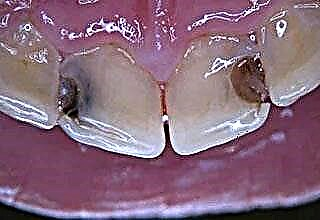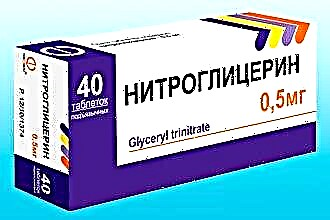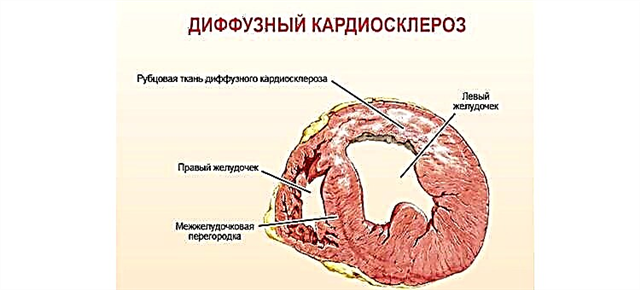The outer part of the human organ of respiration and smell is like a pyramid. It is composed of bone and cartilaginous tissue, covered on the outside by skin, and from the inside by mucous membranes. Each person's nose is individual and depends on various factors: age, gender, race.
Anatomy of the wings of the nose
The wings of the nose are an integral part of the cartilaginous section of the outer nose. The lower paired lateral cartilage connects to the lower part of the upper lateral cartilage, which, in turn, holds the entire structure, attaching to the nasal bone. In addition, sesamoid cartilages of various shapes and sizes can be present between them in the thickness of the tissues.

The wing cartilage has lateral and medial legs, which, when connected in the middle, form the middle leg. The medial crura forms the tip of the nose, and the lower cut of the lateral crura creates the downward nostrils. In addition, the wing of the nose is composed of connective tissues that form the lower posterior regions of the nostrils. The inner sections of the holes are formed by the moving parts of the nasal septum.
Due to this unique structure of the respiratory organ, air enters the olfactory area and travels a long way to the nasopharynx through the cavity where it is processed.
The ability to expand and contract the wings of the nose is due to the presence of a number of small muscles:
- transverse muscle;
- dilator;
- surface elevator;
- true dilator;
- septum depressor.
From above, the wings are covered with tightly attached thick skin with a large number of sebaceous glands. Blood supply is carried out through a number of arteries, and innervation - through the facial nerve and I and II branches of the trigeminal nerve. The lymphatic vessels are connected to the submandibular, chin and jaw lymph nodes.
Diseases of the nasal wings
 There are no specific diseases of these organs, however, diseases of a general nature can be localized on them. In addition, the nerve endings present in the tissues can cause pain from ailments in adjacent areas:
There are no specific diseases of these organs, however, diseases of a general nature can be localized on them. In addition, the nerve endings present in the tissues can cause pain from ailments in adjacent areas:
- Sinusitis. Aching pain appears due to the narrowing of the cavity and the delay of the resulting discharge, weakening after improving the removal of secretion.
- Rhinitis. The inflamed mucous membrane leads to discharge, sneezing and discomfort when pressing on the sides of the respiratory organ. In addition, constant blowing of the nose and wiping of mucus causes irritation of the lower edge of the nostrils.
- Furunculosis. Most often found in the area of the vestibule of the nostrils, where a large number of hairs grow. The disease begins with swelling and redness, after 3-4 days a core is formed. Conservative treatment (antibiotics, analgesics, antipyretic drugs, ointments and compresses), in the presence of an abscess - surgery with cleaning and drainage of the wound.
- Erysipelas. It develops under the influence of a streptococcal infection brought through the skin or mucous membranes. It is characterized by swelling, soreness, itching. In severe cases, skin lesions and the appearance of vesicles (erythema) filled with hemorrhagic or serous contents occur. It is treated with antibiotics of the penicillin group.
- Eczema (idiopathic, microbial, seborrheic, or occupational). Most often it occurs above the upper lip and on the eve of the nostrils, externally manifests itself in weeping and peeling of skin areas and the formation of bubbles. Local therapy, includes antibacterial, anti-inflammatory drugs and glucocorticoids.
The sides of the respiratory organ are susceptible to sunburn. As a result of the influence of aggressive ultraviolet radiation, the epithelium is destroyed, the pain from the tip of the nose spreads to neighboring areas of the skin. A similar picture is observed with a low temperature burn (frostbite).
Also, congenital anomalies in the development of an organ associated with intrauterine mutations (malformations of shells, fistulas) are possible. The causes of congenital deformities can be transferred viral infections, alcohol abuse, in particular at 2 months of pregnancy, when the facial skeleton is formed in the embryo.
The causes of acne and acne
Many people, especially women, are worried about rashes and black spots on the wings of the organ.

The main prerequisites for their appearance:
- Clogged pores with sebum, which is produced by the sebaceous glands. This secret serves to protect the skin from adverse external influences, however, with insufficient personal hygiene, it can accumulate in the ducts and lead to their blockage.
- Hormonal imbalance. This is mainly characteristic of adolescents in puberty and women during menstruation, pregnancy and breastfeeding. Sometimes the appearance of acne can provoke a hormonal surge from a stressful situation or overexcitement.
- Problems in the work of the gastrointestinal tract. They are mainly the result of improper nutrition (excessive consumption of spicy, sweet, fatty, dairy foods, spices).
- Bad habits (smoking, alcoholic beverages).
Methods for dealing with acne:
- correction of the diet (eating more vegetables and fruits);
- observance of personal hygiene, daily washing and cleansing of the skin of the face;
- the use of anti-inflammatory creams and lotions to cleanse the upper layer of the dermis and eliminate foci of infection with small pimples;
- rubbing with aloe juice or propolis tincture;
- the use of drugs on the recommendation of a dermatologist to remove toxins from the liver and normalize the intestinal microflora, adsorbents;
- complex drug treatment of a large number of purulent and white acne.
Injuries. Piercing and its possible complications
 Often, pain in the side walls causes mechanical damage to the cartilaginous or connective tissues due to bruises, blows, falls.
Often, pain in the side walls causes mechanical damage to the cartilaginous or connective tissues due to bruises, blows, falls.
Acute pain and tissue swelling are sure signs of injury. With fractures, pain can last up to three weeks before a callus forms.
In the last decade, piercings on various parts of the body have become more and more popular among young people.
Apart from the earlobes, in the first place, for both girls and boys, there is a piercing of the nasal wings.
It is quite simple to perform, so it is often performed at home. Less commonly, the medial septum is pierced.
However, with an incorrect puncture and non-compliance with the rules, complications are possible:
- the risk of infection entering the wound (especially with weakened immunity);
- the possibility of developing chronic rhinitis due to constant contact of the metal with the secret;
- damage to the internal septum in case of an unsuccessful puncture (especially with the use of a special pistol);
- nerve damage with a subsequent change in sensory and motor functions; allergy to metals.
Perforation of tissues is contraindicated in people who have a predisposition to the formation of hard-to-remove keloid scars at the site of wounds. You should also refrain from piercing patients with blood pathologies or other ailments that affect its coagulability (leukemia, diabetes mellitus, hepatitis). Since tissue puncture is stressful for the body, it is undesirable to do it for people with mental disorders or epilepsy.
After perforation, the wound should be carefully looked after for 2-3 weeks until the canal is formed. To do this, wipe the wound and decoration with an antiseptic, for example, chlorhexidine, 2-3 times a day.



